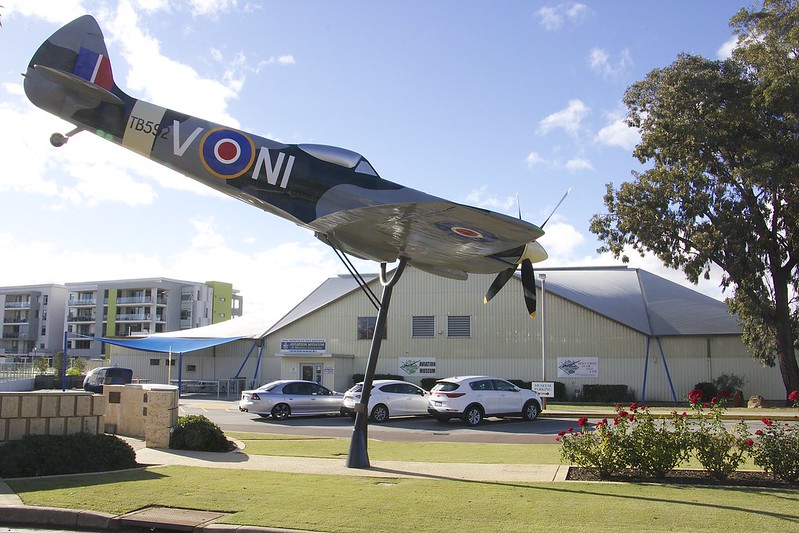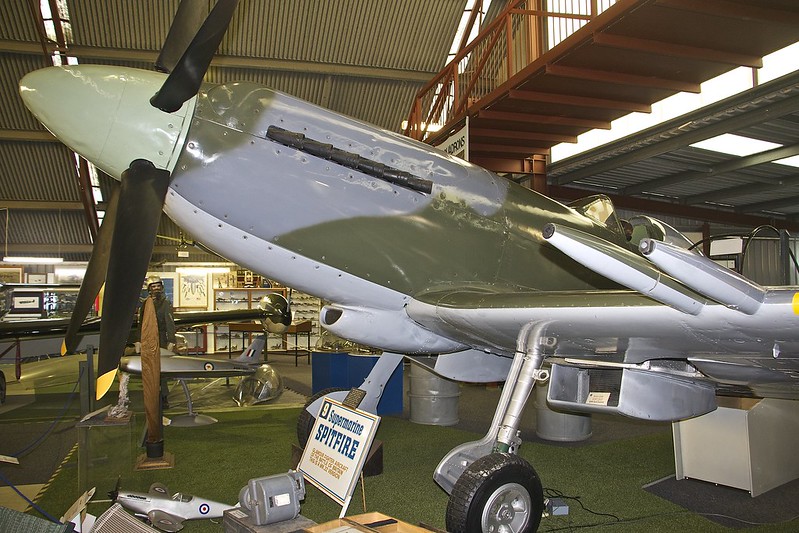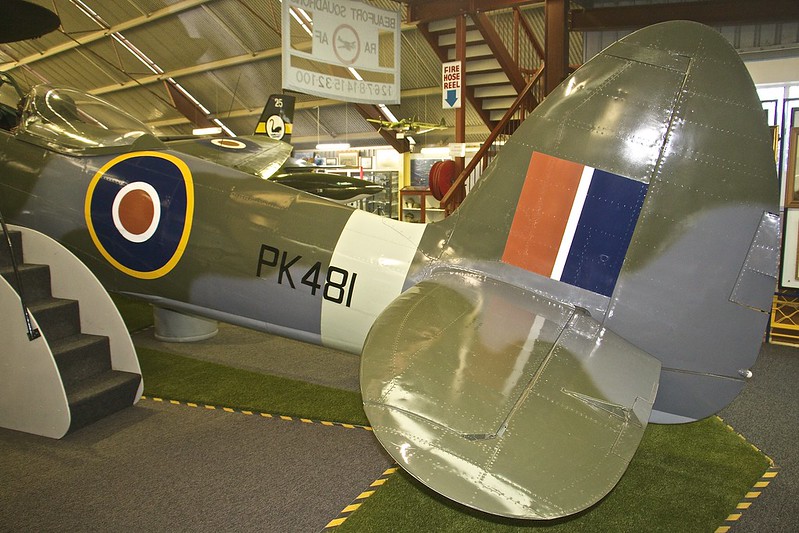Post by dade on Dec 2, 2018 20:14:37 GMT 12
Over the years from 1959 the Supermarine Spitfire PK481 had been painted a few times as it had suffered from the elements, in Western Australia, the heat can reach temperatures of 40 degrees C, plus the cockpit canopy had to be replaced as it had been damaged in a storm. It remained at the site in the city until July 1970
but due to the premises in Adelaide Terrace, Perth, W.A. being sold, the aircraft was taken down from its plinth/pole to be transported to Jandakot airfield where it was refurbished before being remounted at the new estate that was being built at Bullcreek, Perth. This was the retirement village that would later also house the Aviation Heritage Museum. As the years went by and again it was noticed that the Spitfire appeared to be shabby again and a realisation that after 18 years, the aircraft needed a complete refurbish, it was taken down from its plinth/pole and put on its undercarriage in 1977, this was only the second time it has happened since 1959.
An offer of space at the Flying Doctor Service at Jandakot, plus volunteers from 25 Squadron Royal Australian Air Force, the offer of help in refurbishing the aircraft was taken up, after these repairs and painting of the aircraft it was reinstalled back on the site of the retirement village. In 1984 after 25 years and also being 39 years since being built with no major work being done to it, it was removed from its plinth/pole finally and an alternative use of this empty mounting was looked into. It was realised that another metal aircraft was out of the question, but an alternative may be available in New Zealand and this is the third Spitfire to be mentioned in a future story. As the Supermarine Spitfire MK22 needed a total rebuild before going on display internally at the museum, the R.A.A.F. at the local Air force airfield Pearce, offered to restore the aircraft to as new condition, along with the various parts that had been taken out of it to make the aircraft lighter all those years ago were to be refitted in their correct places. Corrosion had set in, as every year that it had been on display outside, the aircraft had been subjected to at least three months rain and sometimes heavy storms which can turn streets into rivers. The most damage was to the starboard wing as the displayed aircraft was always starboard wing low. The technicians repaired or replaced damaged parts and then gave the aircraft a gloss camouflage scheme that even today in 2018, it still looks very good.
Today in 2018 it remains in the Aviation Heritage Museum as a leading exhibit along with the Avro Lancaster and Consolidated Catalina.
but due to the premises in Adelaide Terrace, Perth, W.A. being sold, the aircraft was taken down from its plinth/pole to be transported to Jandakot airfield where it was refurbished before being remounted at the new estate that was being built at Bullcreek, Perth. This was the retirement village that would later also house the Aviation Heritage Museum. As the years went by and again it was noticed that the Spitfire appeared to be shabby again and a realisation that after 18 years, the aircraft needed a complete refurbish, it was taken down from its plinth/pole and put on its undercarriage in 1977, this was only the second time it has happened since 1959.
An offer of space at the Flying Doctor Service at Jandakot, plus volunteers from 25 Squadron Royal Australian Air Force, the offer of help in refurbishing the aircraft was taken up, after these repairs and painting of the aircraft it was reinstalled back on the site of the retirement village. In 1984 after 25 years and also being 39 years since being built with no major work being done to it, it was removed from its plinth/pole finally and an alternative use of this empty mounting was looked into. It was realised that another metal aircraft was out of the question, but an alternative may be available in New Zealand and this is the third Spitfire to be mentioned in a future story. As the Supermarine Spitfire MK22 needed a total rebuild before going on display internally at the museum, the R.A.A.F. at the local Air force airfield Pearce, offered to restore the aircraft to as new condition, along with the various parts that had been taken out of it to make the aircraft lighter all those years ago were to be refitted in their correct places. Corrosion had set in, as every year that it had been on display outside, the aircraft had been subjected to at least three months rain and sometimes heavy storms which can turn streets into rivers. The most damage was to the starboard wing as the displayed aircraft was always starboard wing low. The technicians repaired or replaced damaged parts and then gave the aircraft a gloss camouflage scheme that even today in 2018, it still looks very good.
Today in 2018 it remains in the Aviation Heritage Museum as a leading exhibit along with the Avro Lancaster and Consolidated Catalina.










